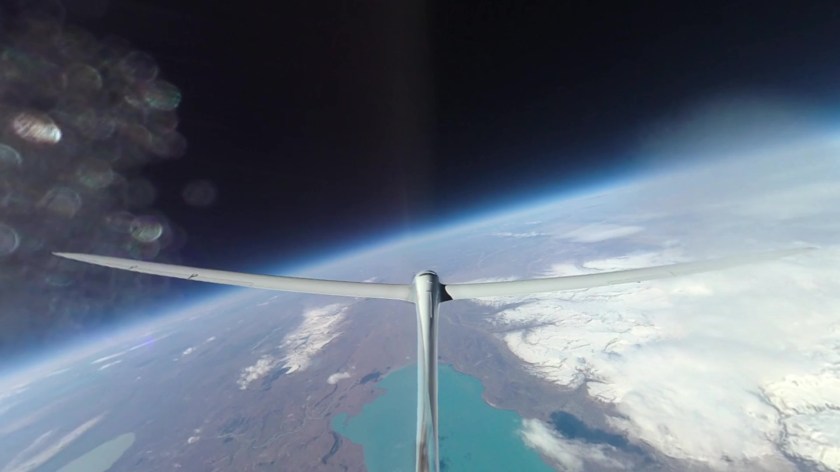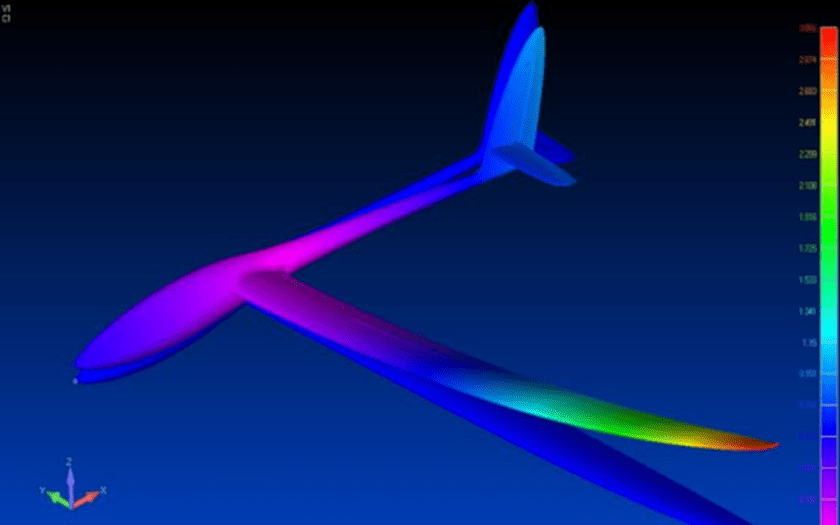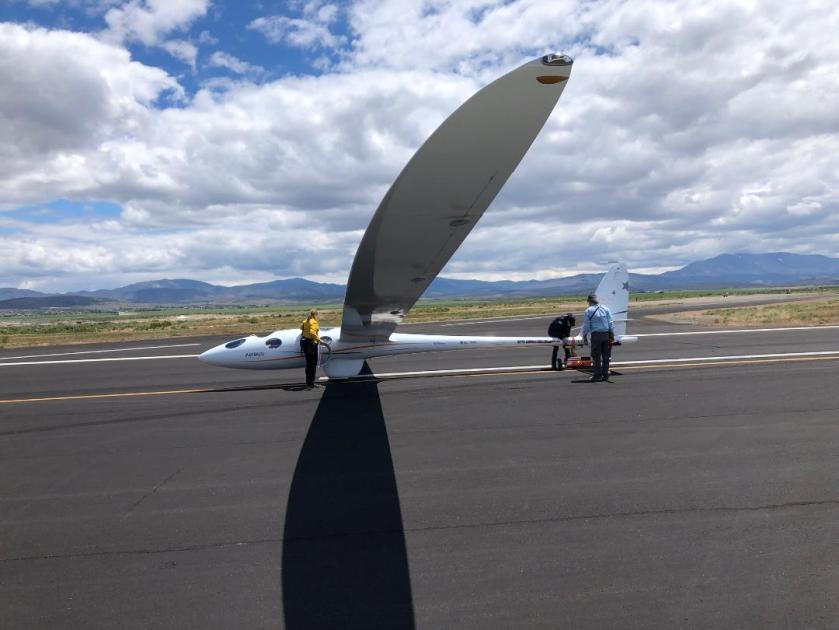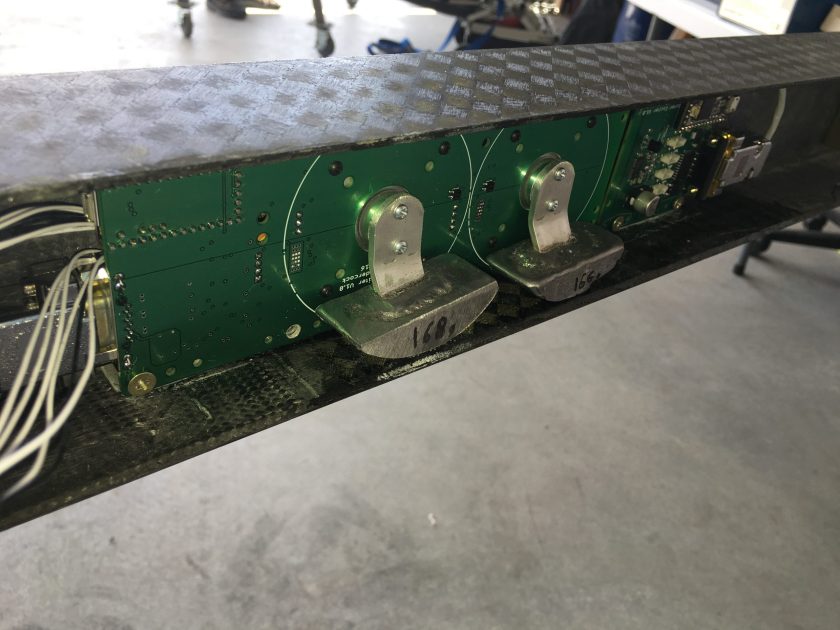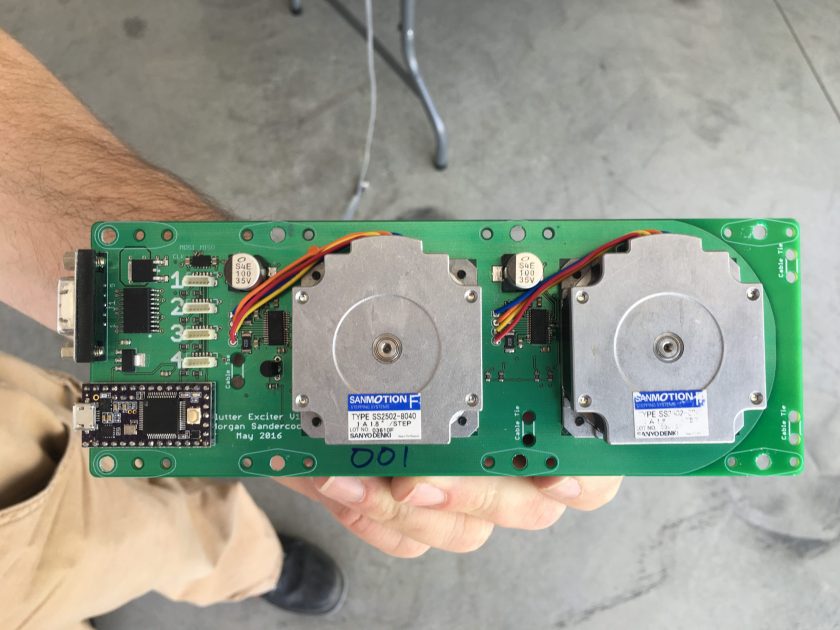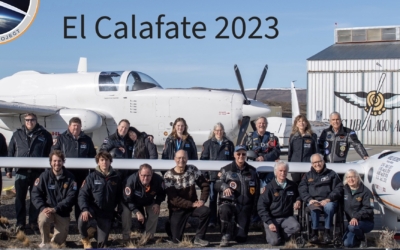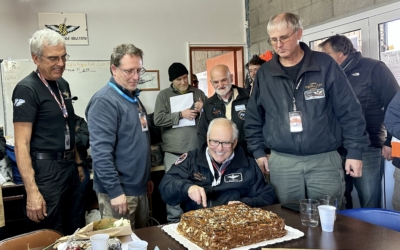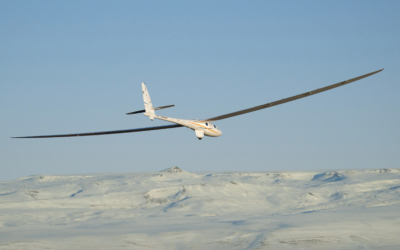A question that we frequently get at presentations is “Why didn’t you keep climbing if the lift was still there?” Even engineers and pilots don’t necessarily understand (or respect) what flutter at these unexplored altitudes and associated fast true airspeeds can rapidly do to an airframe. Theoretical equations are not proven experience. We have done all that we can to approach this challenge with discipline. We don’t want a case of “summit fever” to destroy all our preparations.
The following blog is going to be link heavy. This is to incorporate some explanation of flutter, and some cool photos and videos we have already published on previous early (2016) blogs. Aero engineers, please excuse my general vocabulary. There is an outstanding new Perlan video at the end.
We tested the first prototype Perlan cockpit to destruction at 25 psi. The design limit of spacecraft standards is 3 times as strong as you normally need (for Perlan 2 it’s 8.5 psi). But we never planned to flutter the wings until destruction. So every 5,000 feet the Perlan 2 has stopped climbing and run Morgan’s shakers while flying at slow speeds, then at faster indicated speeds. We record how long it takes for the vibrations (oscillations) to settle down (dampen). That damping is compared to the flutter model built on actual measurements of this airframe at ATA in San Diego. ATA did a ground vibration test to verify the structural modes of the Perlan 2. From these data they created a flutter model for the Perlan 2. This model shows that the Perlan 2 is flutter free throughout its flight envelope if the damping is as modeled. There is a time-lapse video of 5 days of testing in San Diego that only takes 1:22 minutes. http://www.ata-e.com/inside-look-perlan-2-glider-testing/
In 2016 Morgan built weights that swing back and forth at various speeds 2-30 Hertz. There is an early blog that has excellent photos of the flutter excitation system and a video of the excitation of the Perlan 2 wing tip going up and down from the shakers only. No stick input. See https://perlanproject.org/blog/flutter-excitation
The following link from 2017 YouTube shows 30 seconds of the actual Perlan weights swinging very fast while the telemetry display graphs the data. Morgan’s commentary is barely audible, but there. See https://www.youtube.com/watch?v=O9F6nVdvfX4
So that’s a very basic look at HOW we test for flutter excitation. However the unanswered question is WHY are we concerned about flutter? If ANY plane starts to vibrate and it activates a different vibration (coupling) these complicated, ever-worsening (undamped) vibrations can literally tear the plane apart. I have seen a glider horizontal tail cracked almost all the way through on a sailplane that went beyond the manufacture’s speed limit (Vne -Velocity not to exceed). (Bad pilot decisions) That plane was able to land safely from only 2,000 feet. (Good manufacturing) For a 4 minute video of various aircraft, including sailplanes, fluttering go to https://www.youtube.com/watch?v=egDWh7jnNic
Conditions are much dicier above 50,000 feet. As one extremely experienced test pilot who is also a glider pilot said:
…the PERLAN sailplane is a prototype, one of a kind, an “X” plane for all intents and purposes. JP and the team are gently opening the aircraft envelope, especially in flutter. So, on the way up, they are sending the instrumented aircraft’s structural dynamic responses to raps and shaker sweeps to a ground station populated by aeroelastic wizards, as they climb higher and higher—-so far they have been to 76,000+ feet.
Another glider test pilot Chris Glaeser said in 2018:
While breaking the record last year [2017] was a big achievement, it pales in comparison to 76,000+ feet. This year, you have ventured into the unknown, and are truly advancing atmospheric science. Your achievement this year is similar to that of the explorers of the 19th century who ventured into areas of the world where the map was blank. There is just no knowledge of what the atmosphere does above 70,000, since all of the previous aircraft/spacecraft are so heavy that they mask most of the characteristics. The atmospheric pressure drop from 54,000 to 76,000 is amazing: (1.36 psi to 0.56 psi), and then another drop at 90,000 to ( 0.255 psi). I can see why you are concerned about flutter! The pressure at 76,000 is equal to 6 times Martian sea level, if my math is close. I’m amazed that the wave is so strong there, and will be interested in learning about what the rate of upward movement was in the wave at 76,000 feet? Its also amazing that 0.5 psi can support lift at all. In any case, I’d like to add my congratulations to those of the entire industry and hope that you and Jackie continue to gain additional recognition on this marvelous lifetime achievement!
Glaeser continued, “From the back of an envelope:
48 KIAS @76,000 ft=> (48*4.8)=230 KTAS
230*1.68781= 389 FPS
Mach 1 @ 76,000 feet ~~ 967 FPS
Your Mach at 76,000 ft: 389/967 = 0.402 M
So you also set a couple of new records:
Highest Mach number for a glider
Highest Mach number for any object with zero ground speed (!) Pretty cool.” End quote.
Some of those Perlan CapCom aeroelastic wizards are Lars Bensch (A380 flutter lead) from Airbus and Al Lawless who has won the Kelly Johnson award for Flight Test Engineer of the Year. Lars conducted an oscillation recognition test in the hangar at El Calafate. Jim was in the front seat and Tim was in the back seat (nearer the wings and center of gravity). Al was observing. I videoed with my cell phone. Lars’ first inputs were up and down on the wing tip. Next he pushed the wing tip fore and aft. Lars moved to the tail to oscillate the tail and/or cause coupling with the fuselage bending. Tim’s observation when the experiment was over was that each set of vibrations felt different on his seatpan. ONLY if the Perlan is flown OUTSIDE its flight envelope would these oscillations be encountered. The team is conducting flight test build up to verify that the actual damping is equal to or better than the ATA predicted damping. This new Perlan specific video can be seen on YouTube at https://youtu.be/Jctb4X3yluA and below in the blog if your browser supports.
In 2018 after the highest soaring flight of 76,000 feet (pressure altitude), the pilots and engineers agreed Perlan needed to expand the envelope for speed before going higher. Successful flutter damping at 60,000 feet at high speed gives a confidence that 80,000 or 90,000 feet is safely achievable flying slower. (Again, aero engineers, please excuse my general vocabulary.) Thus in 2018 after the world record flight they flew a test mission to 62,000 feet to expand the higher speed envelope. Perlan pilots and engineers decide on the test plan for the next flight. They agree what the next safe ceiling will be. This disciplined, calculated decision making avoids “summit fever.” Perlan Project is confident to report we are now ready to safely climb above 76,000 feet within our Mach limit of 0.62M. (This is only 54 kts indicated at 90,000 feet.) Weather permiting, of course.
If you want to ride along virtually when Perlan 2 flies you can watch our PERL^N VIRTU^L COCKPIT at www.perlanproject.cloud/VirtualCockpit.html
You can be notified when Perlan 2 is about to fly three different ways by
sharing your email on our website “Sign up for our mailing list” at perlanproject.org on the front page or
with a US phone number you can text Perlan to 57682 or
you can follow us on Twitter @PerlanProject
Perlan Soars High! Jackie

